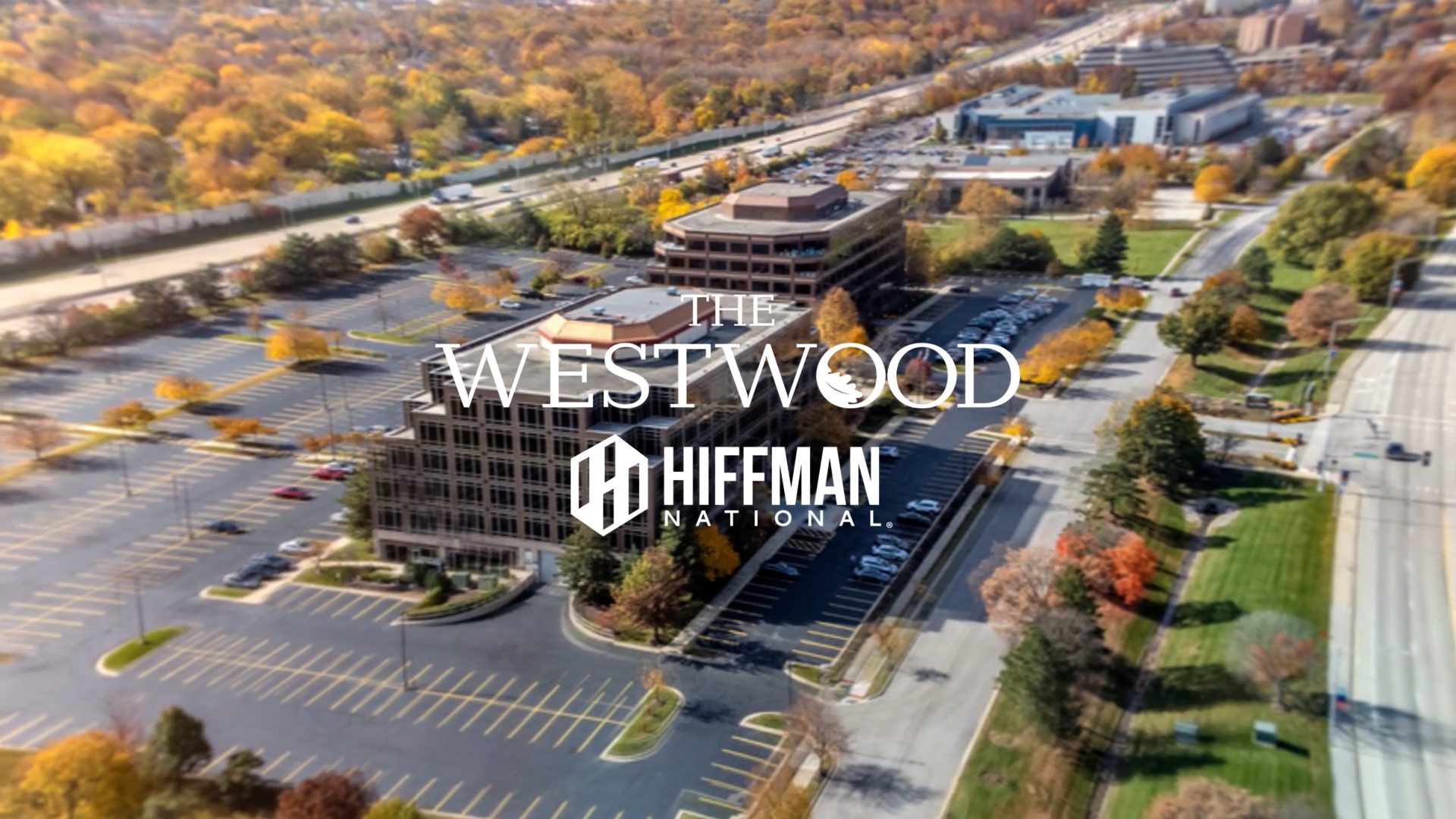August 2022
Experts seeing signs of progress in suburban office market

As published in the Daily Herald
By Orrin Schwarz
When Adam Johnson finds himself sitting in traffic these days, instead of cursing his luck, he reminds himself that this inconvenience has a bright side for someone in his business.
“As an office guy, I can be angry I’m sitting in traffic,” said Johnson, NAI Hiffman executive vice president specializing in office capital markets. “But then I also have to be happy because that means people are coming back to work, which is good for us.”
As economic indicators go, it’s not the most scientific. Neither is the eyeball test Johnson employs when he says he sees more cars in office building parking lots. But the point remains, after a difficult couple of years, there is evidence of progress in the suburban office leasing market.
It’s not great progress, and we’re not definitely back to pre-pandemic levels in the suburbs. Landlords still are feeling the pinch.
Said Jon Azulay, senior managing director at Savills Research: “It is a great time to be a tenant in suburban Chicago. If you’re a tenant with credit, the world is your oyster.”
Survey says
According to Savills’ survey of suburban Chicago for the second quarter, leasing volumes rose more than 70% over the second quarter of 2021. “With nearly 1.7 million square feet leased, this quarter marked the best period for transaction activity since the start of the pandemic,” the report stated.
A big part of that, Azulay said, was Ace Hardware relocating its headquarters to the former McDonald’s campus in Oak Brook was the biggest lease of the quarter in the suburbs (McDonald’s moved to Chicago). Zebra Technologies extending its lease in Lincolnshire for six years also was a big deal. Endotronix is expanding its footprint in the East-West Corridor along Interstate 88.
On the negative side, Caterpillar announced it is moving its HQ out of Deerfield to Texas.
The office space availability rate in the suburbs is 31.1% vs. 31.2% for the second quarter of 2021.
The 2022 Mid-Year Chicago Sentiment Report — produced by The Real Estate Center at DePaul University and the Urban Land Institute Chicago District Council — indicates the distress remaining in the suburban office market, with sentiment weighted toward the negative.
Report participants were asked to rank on a scale from 1 (lowest) to 5 (highest) the strength of various commercial real estate sectors as well as vulnerability to distressed market conditions. The suburban office market fared better than the downtown office market in terms of strength — 2.44 versus 2.23 — and vulnerability to distress — 3.38 to 3.78.
However, when compared to all other sectors, the ranking for suburban office was only stronger than downtown office and enclosed malls.
Much of the problem is the uncertainty in the economy. We seem to be past the stops and starts caused by COVID-19. But we’re not out of the woods yet with regard to inflation and supply chain woes, and more interest rate hikes are likely because of inflation.
Johnson doesn’t expect interest rates to drop back to pre-pandemic levels anytime soon, but he said they don’t have to drop that far for leasing activity to normalize. Interest rates have been in the 5.5%-6% range the past couple of decades, and that’s about where we are now, he said.
“Somehow the markets functioned when rates were at 5 or 6%,” he said. “And I don’t think interest rates are going to stay at 5 or 6%, but when they come back down, they’re obviously not going to go back down to 3. But the markets are still going to function fine even with a higher interest rate environment.”
Shortages in the workforce also have handicapped employers when it comes to making long-term plans. Employers often have to go to greater lengths these days to attract and retain employees. That often means allowing employees to work from home at least a couple of days a week, but those decisions are still shaking out at many businesses, especially large corporations.
“It comes down to basically corporate users being able to know who they are tomorrow,” said Jason Wurtz, executive vice president in the Office Services Group at NAI Hiffman. “… Office will survive in a form or fashion. You’re just going to have a model that works not so much work from home but flex hours. When the dust settles I think everybody has flex hours.”
Until the dust settles, many companies are keeping their commitments short-term.
Johnson said most CEOs want to see their people back in the office at least two or three days a week, a scenario that might see them sharing desks by coming in on alternating days, requiring fewer square feet of office space.
“I don’t hear five days very often,” Johnson said.
Of course, if layoffs pick up, employees might become more motivated to get to the office.
A flight to quality
The type of office space matters also. There is a flight to quality going on within the Chicago area.
Older, Class B space is struggling. It might be more likely to find another use than to be leased as office space. Newer, Class A space is in. Newer is associated with cleaner, healthier and more comfortable. It also is more likely to have the kind of amenities that can make employees more willing, maybe even eager, to show up to the office.
“The employee work environment culture, I don’t feel it’s ever been more important than it has been in the past 10 years,” Wurtz said. “There’s really been a drive to that employee retention and culture and your environment and trying to keep those employees happy.”
Added Johnson: “I think at the end of the day companies realize you still need to have that cohesiveness, collaboration. And it’s hard to do that over Zoom. It’s hard to do that when people are sitting in their homes. It makes people more mobile if they’re not connected to a company, have friends at a company. Those are all things that help strengthen a company.”
Location matters also. The O’Hare submarket, being centrally located, is doing well. DuPage County, particularly the Interstate 88 corridor, also is a bright spot.
The North suburbs are struggling because tenants don’t want to be that far north.
The Northwest suburbs, such as Schaumburg and Hoffman Estates, are struggling. One huge question there: What will happen to the former Sears property?
What does the future hold?
Azulay sees a long road back to normal.
“I think it’s going to continue to be a tenant’s market for the foreseeable future,” he said, predicting it will be 12-24 months at least. “It will continue to be hard for landlords.”
Added Wurtz: “I have a fairly positive outlook overall. I think it’s going to be slow, but I have a positive outlook. I think the damage has been done and tomorrow’s better.”
One reason for Anderson’s optimism is the increase in the number of small businesses being created during the pandemic. The new small businesses are looking for small spaces, often in single-story buildings. Eventually, they will grow into bigger spaces.
Johnson sees a scenario with significant improvement in six to 12 months, depending on how inflation and interest rates shake out.
“We’d be lying if we said there’s no worries at all, office is going to be perfectly fine,” Johnson said. “I think there’s still some stressors out there. And there’s still issues to be worked through and we don’t know what that looks like yet. But the indications have been there’s more people coming back to the office.”


